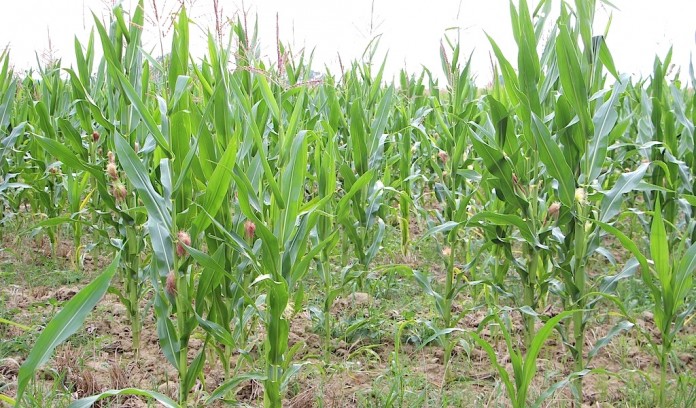SALEM, Ohio — Some much-needed rain fell across Ohio and Pennsylvania to close out July, but for some farmers, the damage may already be done.
According to the results of the U.S. Drought Monitor, released July 28, almost all of northeast and northcentral Ohio was in a “moderate drought,” the first of four levels of drought severity.
The moderate drought continues in northcentral Pennsylvania, and the majority of both states are classified as “abnormally dry,” a step before drought. The worst conditions are in the northernmost counties of Pennsylvania, and into New York, where counties are suffering “severe drought,” or the second level of severity.
Drought levels are determined by a combination of soil moisture and precipitation.
Western Ohio
Anthony Stateler, whose family produces crops and swine in Hancock County, said the rains have been hit or miss. His parents farm at the northern end of the county, and got about half an inch July 31, while he got just enough to leave spots on his truck.
He said about 4.5 to 5 inches of rain have fallen since they planted, much less than they’d like. But the corn is doing better than expected, because it got a dry start, which forced the plants to develop stronger roots.
He’s especially concerned about the heat and warm nights, which can stress corn plants and cause them to burn up more energy. He’s said he’s seen pictures of corn ears with 1 to 4 inches of tip back (unfilled ears).
Losing yield
In the most severe places, yield losses are already expected.
Bill Cox, a corn and soybean specialist for Cornell University, said farmers in central and western New York are facing at least a 30 percent yield loss for corn, and a silage loss of 40 percent or more.
He said the central and western part of the state is facing the driest period on record, and it’s affecting pretty much everything.
Mike Stanyard, a field crop specialist with Cornell Cooperative Extension, said he’s been advising corn farmers to work with local dairy farmers, to sell their corn as silage, if it doesn’t produce a good ear.
He said the corn is much shorter than it should be, with the possibility that ear development may still be OK — but only in places that have been lucky enough to catch a storm.
“Your neighbor can get an inch, and you get nothing,” he said.
Stanyard expects the drought will be a big topic at this year’s Empire Farm Days, set to begin Aug. 9, in Seneca Falls.
In Ohio and Pennsylvania — “scattered” has been the story.
Eastern Ohio
Randy Campbell, whose family operates Campbell Brothers farm along the Columbiana-Stark county line, said part of their farm got 1.5 inches of rain over the weekend, while other parts got .4 of an inch.
He said he’s surprised how well his crops are handling the stress — but said they could definitely use more water.
Corn plants especially need moisture during pollination and ear growth, which has been happening the past couple weeks in Ohio.
“The real concern, of course, is that there’s so much corn in pollination,” said Peter Thomison, Ohio State crop sciences specialist.
Thomison said he’s seen some fields where growth has been stunted and retarded from a lack of moisture. The most severe, he said, could face a 30 to 40 percent yield loss.
Thomison said this will be a good year for producers to evaluate drought-tolerant hybrids — whether they make a difference and whether they might be worth considering in the future.
State level
Steve Maurer, executive director for the U.S. Department of Agriculture’s Farm Service Agency in Ohio, said he’s been hearing reports about the spottiness. He said conditions vary “mile to mile” across the state, “just depending on when a shower might have come through.”
He said farmers who believe their crops have been damaged should report it to their local Farm Service Agency office, and work with their insurance agents on any damages.
It’s too early in the season for a disaster declaration, and conditions in Ohio have generally not reached that level. But producers should report their own conditions to their county, which could potentially be used to trigger emergency loans, and other assistance, depending on the type of damage and the crop.
Assistance available
Maurer said in recent years, crop insurance has become the biggest safety net for crop farmers, but there is still an emergency loan program available, and there are separate programs to compensate livestock farmers who meet the criteria.
For a disaster designation from U.S. Secretary of Agriculture, a county would need to experience eight consecutive weeks of at least a second-level drought, or a 30 percent loss of at least one crop.
Growing season. For corn and soybeans, harvest is still a month or two away — and farmers are hoping for a better second half. The National Weather Service predicts a mostly warm and dry start to August, but not as hot as July.
However, the weather service also predicts that drought will persist in northern Ohio, and the western half of New York, through October.










